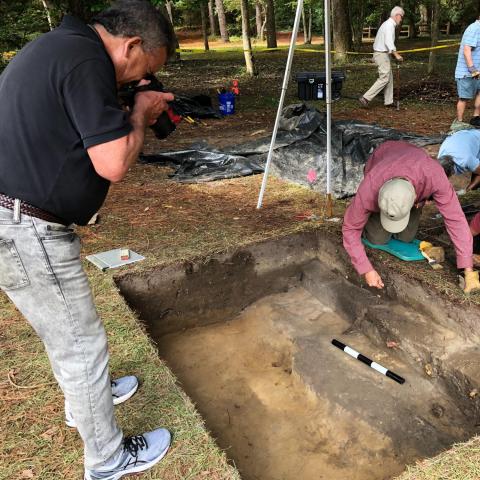
Ocean overwash near the north end of Okracoke Island, February 2024, Cape Hatteras National Seashore / NPS file
Barrier islands form as waves repeatedly deposit sediment parallel to the shoreline. As wind and waves shift, so do these sand features. It’s no surprise, then, that Ocracoke’s dynamic barrier island, a part of Cape Hatteras National Seashore (Seashore) in North Carolina, is constantly changing in response to storm events and sea level rise. This presents challenges to the maintenance of the transportation corridor that spans the length of Ocracoke Island. “The chronic effect of storm events and coastal processes, including high-tide flooding, may worsen shoreline erosion in the future. Additionally, climate change may amplify these challenges by increasing hurricane longevity, intensity, and rainfall,” according to the National Park Service.
As such, Cape Hatteras National Seashore has entered into a cooperative agreement with the University of North Carolina at Chapel Hill to evaluate the effects of several adaptation strategies related to transportation and resource management challenges on Ocracoke Island. Researchers from North Carolina State University, Duke University, East Carolina University and representatives from the North Carolina Department of Transportation, Hyde County and Tideland Electric Membership Corporation are also participating in the multi-year study.
Strategies used for decades to maintain N.C. Highway 12 and the South Dock Ferry Terminal do impact Seashore lands and may have inadvertently contributed to the low elevations and narrow island widths currently making transportation susceptible to disruption from ocean overwash, soundside flooding and heavy precipitation events.
This multi-year study seeks to answer questions relating these issues, to improve transportation reliability, and how best to manage natural barrier island processes. Model scenarios will simulate the effects of using a status-quo management approach (e.g. continuing to maintain the existing location of the highway), conducting beach nourishment project(s), and exploring how the barrier island would migrate in response to other transportation alternatives.
An information session providing a project overview, reviewing the modeling exercise, and soliciting feedback from the public is scheduled from 1-2:30 p.m. Sept. 4, 2024, at the Ocracoke Community Center. The results from initial modeling and public feedback will be incorporated into the second year of research which will evaluate the effects of other transportation strategies before concluding with a second information session during the summer of 2025.
To learn more about the study, including additional opportunities to provide feedback, visit https://c-coast.org/ocracoke-adaptation-study.


 Support Essential Coverage of Essential Places
Support Essential Coverage of Essential Places






